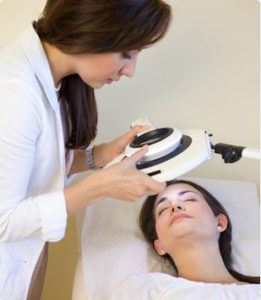It Pays To Check Your Skin For Changes
- Posted on: Jan 30 2016
 Your skin is the largest organ in your body. It tirelessly protects you from the damaging effects of the environment. A good habit to form is checking your body all over once a month for any irregularities or abnormalities. Any new or changing skin condition may be indicative of a more serious medical problem. Your best chance of eliminating an issue later on is early detection and treatment.
Your skin is the largest organ in your body. It tirelessly protects you from the damaging effects of the environment. A good habit to form is checking your body all over once a month for any irregularities or abnormalities. Any new or changing skin condition may be indicative of a more serious medical problem. Your best chance of eliminating an issue later on is early detection and treatment.
To that end, here are five common skin growths to keep your eye on:
- Moles – These are the growths to watch closely. Moles protrude from your skin. They’re typically brown or black. Many form before the age of 30 and can slowly evolve over time. You may have singular moles or moles that appear in bunches. Moles can be removed for either medical or cosmetic purposes. It is important to watch moles for changes in shape, size or color, as this may possibly indicate a skin cancer.
- Seborrheic keratoses- Seborrheic keratoses also protrude from your skin. They are brown or black and may develop on your chest, face, under your breasts or your back as you age. Unfortunately, there is no known cause for seborrheic keratoses, but they’re typically harmless.
- Skin Tags – Skin tags are flesh-colored flaps of skin that often grown in your armpit, under your breasts, on your neck or in your groin area. They do not usually pose a threat to your health but they can be removed for cosmetic purposes.
- Freckles – Freckles appear as dark spots on your skin. Fair-skinned people are more susceptible, and commonly develop freckles on their face, shoulders, and arms. Freckles are not usually a cause for concern and do not need to be removed.
- Lentigines- Like freckles, lentigines are dark spots that appear as a result of sun damage. They are most common in the aging population. A lentigo can be eliminated with topical medication or laser therapy.
If you have a suspicious mole or skin growth you would like to have checked, call to schedule an appointment with Dr. Callender, today. It’s better to err on the safe side when it comes to a suspicious skin growth: (301) 249-0970.
Posted in: Skin Cancer


